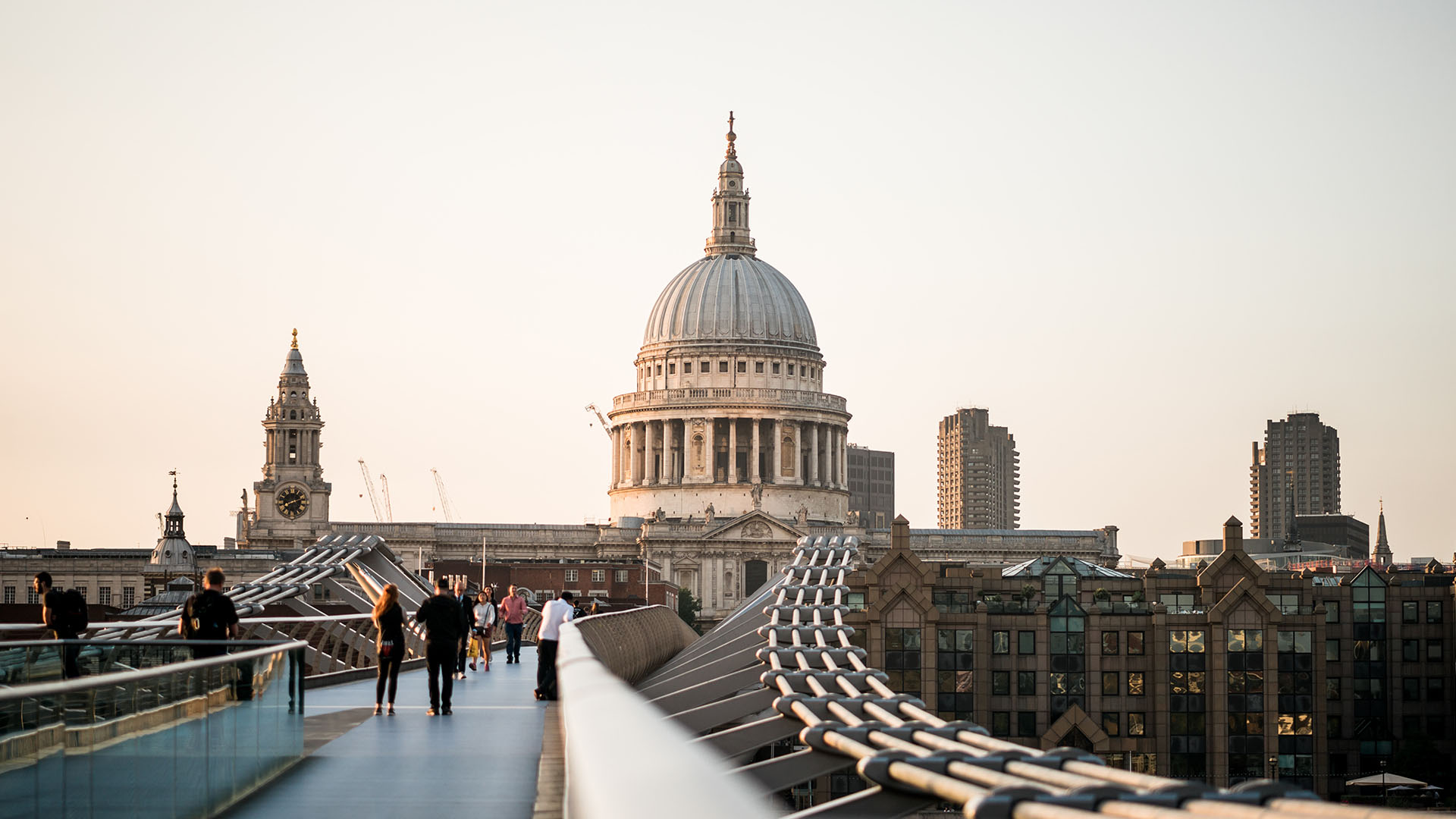Luminaries such as Sir Edwin Lutyens, Raymond Unwin, Aston Webb, Beresford Pite, Frank Brangwyn, Lord Northcliffe and Gordon ‘Harry’ Selfridge brought people together to debate key issues about the future of the capital - housing, roads, railways, the channel tunnel, bridges and even airports - all high on the agenda today.
Today, The London Society is focused on the core areas of the ‘built environment’ that impact our lives now and the lives of future Londoners. These can be broadly categorised as: transport, housing, health, economy, faith, culture and sport, environment, crime and safety.
The ‘built environment’ is an umbrella term for all activity that physically shapes our city. The aim of the society is to translate and bring clarity to the many component parts of this world that are often inaccessible to the general public. We organise debates and lectures including the annual Sir Banister Fletcher Lecture, addressed by distinguished speakers. We also run events and visits to a variety of places, buildings and institutions, some not generally open to the public. We also actively engage with politicians at all levels.

Our motto is "valuing the past; looking to the future" – a mission that the Society tries to achieve through its publications, events and lobbying.
We arrange events and visits to a variety of places, buildings and institutions, some not generally open to the public, organise debates and lectures, including the annual Sir Banister Fletcher Lecture, addressed by distinguished speakers.
Members get discounted tickets to all events, priority booking and the Society’s Journal each year.
To receive news of forthcoming events, join our mailing list.
The London Society would not exist with the support of our members and our corporate sponsors and supporters.
These are organisations who understand that the conversation around London is complex and they welcome thought provoking, civil debate and discussion. They support the objects and activities of the Society and their generous support enables the society to run a small but highly effective team to deliver a relevant programme of activity each year.
Donations under the Corporate Supporter scheme are tax deductible as the London Society is a registered charity.
For full details, please contact the Director
director@londonsociety.org.uk
Supporters receive:

Almacantar is a property investment company specialising in large-scale, complex developments in Central London. Known for its design-led approach, the company focuses on creating long-term value through development, repositioning or active asset management.
Since it was launched in 2010 by Mike Hussey, Almacantar has acquired over 1.5 million sq ft of prime assets in the heart of London including live projects; Centre Point, Marble Arch Place, One and Two Southbank Place and Lyons Place.

Allies and Morrison is an architecture and urbanism practice based in London and Cambridge.
Their work ranges from architecture, interior design and conservation to masterplanning, consultation and research. Twice shortlisted for the Stirling prize, 41 of their completed projects have won RIBA awards. They are especially known for their work across London. As architects, their buildings, of various scales and different types, can be found across the city – from the refurbishment of the Royal Festival Hall and Rambert at Southbank to White City Place to Greenwich’s Royal Observatory to laboratories for both King’s College and Imperial College.

Cadogan is the historic estate that is shaping the 21stcentury Chelsea. Spanning 93 acres of the Royal Borough of Kensington and Chelsea, the Cadogan Estate has been under the same family ownership for almost 300 years.
Its foundations were established in 1717 when Charles, 2ndBaron Cadogan, married Elizabeth Sloane, daughter of Sir Hans Sloane, who had purchased the Manor of Chelsea in 1712; the family stewardship of the area continues in the hands of the present Viscount Chelsea. Today, the Estate includes approximately 3,000 flats, 200 homes, 300 shops, 500,000 square foot of office space – and over a dozen gardens covering 15 acres.

EH Smith Architectural Clay have been advising Architects on façade materials since 1922. Still privately owned, we are proud to have played our part in supplying bricks, terracotta rainscreen and other materials to thousands of sites across London.
EH Smith are particularly passionate about the unique creativity that is possible with the humble brick and the way it has shaped London throughout the years. We work with the whole construction supply chain from Client to Bricklayer to ensure that the right materials are selected and supplied. This service is backed up with over 500 members of staff, a fleet of 60+ delivery vehicles and 13 stocking locations.

HTA Design LLP is a multi-disciplinary practice based in London, Manchester and Edinburgh, specialising in regeneration. The practice was originally established in 1969 and has a strong history of delivering great projects. HTA Architects Ltd, transferred to HTA Design LLP in April 2013 when a new partnership was formed.
Comprised of specialist teams, HTA Design LLP employs 160 staff working in architecture, landscape design, planning, urban design, sustainability and graphic design & communications.

Kanda is a multi-disciplinary communications agency that is passionate about regeneration and place-making.
We use our breadth and depth of experience with communities, developers and decision makers to create the very best places to live, work and visit. We operate exclusively in the regeneration, property and planning world. With consultants working across England, we deliver exceptional consultation programmes, combined with the very best policy advice and political counsel.

The Portman Estate comprises 110 acres of Marylebone in London’s West End, including frontages to Oxford Street and Baker Street. It covers 69 streets, 650 buildings and four garden squares all housing over 700 directly managed residential units, 290 office units, 150 shops and restaurants, 27 hotels and seven pubs. It is committed to excellence in customer service and aims to be the destination of choice for residents, businesses and visitors, where the buildings exceed market demand and the environment is distinctive, varied and vibrant.
Since 2002, the Estate has directly invested an average of £20 million per year throughout Marylebone. This has included the regeneration of its independent retail streets, Seymour Place, New Quebec Street and Chiltern Street, and the introduction of new extensively renovated hotels The Zetter Townhouse and Z at Gloucester Place. Over the next ten years, an estimated £350 million will be reinvested Estate-wide to ensure long term growth and create attractive, vibrant spaces for the Marylebone community to enjoy. Projects currently under construction on the Estate include the redevelopment of the former police station at 1 – 9 Seymour Street, Regent House on Edgware Road, the Baker Street Two Way scheme, and the landmark mixed use development at Marble Arch Place. Future initiatives include the planned redevelopment of 1 – 4 Marble Arch.

Space Syntax provides architectural design and urban planning services, with a particular focus on human behaviour patterns in buildings and cities.
It has pioneered a data-driven approach to planning and design, creating computer modelling methods that forecast the impacts of movement flows and space use patterns on social, economic and environmental issues including health and carbon emissions. Founded at University College London in 1989, and now employee-owned, Space Syntax supports property developers, planning authorities and local communities in creating places that work for the people that use them. Its projects include the redesign of Trafalgar Square, the Southbank Centre, Tate Modern and the Queen Elizabeth Olympic Park.

Stiff+Trevillion are a well-established West London practice with a strong reputation for elegant and sophisticated architecture.
Collaboration is at the heart of the practice's ethos. The studio employs a diverse team of architects, technicians, visualisers, interior and furniture designers. This blend of skills reflects the work we do across the commercial, restaurant & retail and private residential sectors and creates a lively and vibrant working culture.

Raffles Davison wrote ‘The chief issue is the good of London, its orderly and beautiful development, its general amenity as a place for business or pleasure’ and that the Society’s role was ‘to think about the Future of London and it’s improvement’ as well as ’the jealous preservation of all that is old and beautiful in London as far as is possible.’ These aims of the Society hold good even today.
In 1919 the Society published its own Development Plan for London – one of the first London Plans – its call for green spaces in the outer suburbs was a precursor of the Green Belt legislation and the area covered in the plan foreshadowed the designation of the enlarged municipal areas. In the inter-war years the Society worked on more detailed plans for the central area during a period when there was little political interest in spatial planning.